Read Time: 4 Minutes Subscribe & Share
My Biscuit Background
 My mother-in-law was a marvelous cook. She was also by necessity a frugal one. She counted it an economic victory if she could keep her grocery expense down to ten dollars a bag. While meat was a treat, many of her meals would include rolls or biscuits. I follow her recipe for fruitcake successfully, and have tried to replicate her heavenly version of Southern Ice Box Rolls (so far a fail) and her scrumptious biscuits (some modest successes along with some hockey pucks). Dorothy Remington Pollard used Crisco, which of course, having read the ingredient label, I prefer not to purchase. I keep lard in the fridge instead. My most recent online supplier is South Chicago Packing.
My mother-in-law was a marvelous cook. She was also by necessity a frugal one. She counted it an economic victory if she could keep her grocery expense down to ten dollars a bag. While meat was a treat, many of her meals would include rolls or biscuits. I follow her recipe for fruitcake successfully, and have tried to replicate her heavenly version of Southern Ice Box Rolls (so far a fail) and her scrumptious biscuits (some modest successes along with some hockey pucks). Dorothy Remington Pollard used Crisco, which of course, having read the ingredient label, I prefer not to purchase. I keep lard in the fridge instead. My most recent online supplier is South Chicago Packing.
Biscuits are not in my wheelhouse. In my childhood, dinners were supplemented occasionally by Pepperidge Farm French rolls, which were really, really good and of course, are now really, really discontinued. After several heavy-handed biscuit disasters, I remain extremely grateful to the book by Cynthia Graubert and Nathalie Dupree, Southern Biscuits from which I made my first truly successful biscuits.
I check out biscuits in restaurants, too, and I have a friend who, as a professional Southerner, shared with me her thoughts on the mysteries of what makes a good biscuit. First of all, they really should not be too big. A case in point was a huge biscuit that I was served in a restaurant with a lonely, diminutive fried egg staring haplessly up at me and accompanied by a couple of stingy pats of butter. Biscuits should not fall apart either, says my friend; rather, they should split easily so you can slather butter on them while they are still warm. To quote her directly:
The biscuit qualities I highly value are buttery and fluffy inside and golden flaky outside. I don’t like dense , hard, dry or crumbly ones. And if there is a protein between the halves (chicken, sausage, ham, bacon) the biscuit better stay intact until the last bite.
Interestingly, biscuits as we know them really came about with the discovery of baking soda and powder. Previous to their invention, biscuits were hard and, in the South, some recipes called for them to be beaten with a hammer for an hour to break down the gluten and build air bubbles to create some lift.
It Takes Two
I actually have two favorite recipes for biscuits, one for slathering butter and jam on at breakfast and another for berry shortcakes. Berries need a more mellow, gentler, and sweeter biscuit than the one that can support loads of melting butter, dollops of jam or a piece of pork.
My favorite breakfast biscuit is still from the first baking book by Brian Noyes, who left a career as an an art director for several publications to create a bakery in rural Virginia. After winning a prize for his jam, Brian sold his baked goods at a weekend market in Warrenton, Virginia. He and his husband had bought a a farmhouse as a weekend retreat in the area and are now fixtures with two Red Truck Bakeries – I encourage you to make a day trip to either location in Warrenton or Marshall. Once set on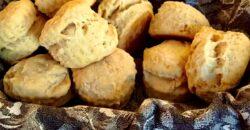 this course, Brian enrolled in the professional pastry program at the now closed L’Academie de Cuisine in Gaithersburg, MD. But he also badgered cooks throughout his travels for their techniques and recipes. And his biscuit recipe is a beneficiary of his badgering and baking. I bake these on the sheet as recommended but I also bake them in a cake pan, as in my oven the cast iron skillet alternative gets them too brown for our liking. I slavishly follow his biscuit placement technique, which is to push them close to each other so that they rise up with one another to soaring heights.
this course, Brian enrolled in the professional pastry program at the now closed L’Academie de Cuisine in Gaithersburg, MD. But he also badgered cooks throughout his travels for their techniques and recipes. And his biscuit recipe is a beneficiary of his badgering and baking. I bake these on the sheet as recommended but I also bake them in a cake pan, as in my oven the cast iron skillet alternative gets them too brown for our liking. I slavishly follow his biscuit placement technique, which is to push them close to each other so that they rise up with one another to soaring heights.


- 5 1/4 cups (656gr) all purpose flour, sifted, plus more for dusting
- 1 tablespoon baking powder
- 1 1/4 teaspoons baking soda
- 1 tablespoon plus 3 teaspoons kosher salt
- 2 tablespoons sugar
- 1 cup (2 sticks or 227gr) unsalted butter, chilled and cubed plus 4 tablespoons (1/2 stick) melted
- 1/2 cup (120ml) heavy cream
- 3 cups (710ml) buttermilk
- In a large bowl, whisk together the flour, baking powder, baking soda, 1 tablespoon plus 2 teaspoons of the salt and the sugar.
- Cut the chilled, cubed butter into the flour mixture with your fingers, two knives, or a pastry cutter (do not use a mixer) until broken down into pea size pieces.
- Combine the heavy cream with the buttermilk in a measuring cup and add it to the dry mixture all at once.
- Using a spatula or a plastic scraper, fold in the buttermilk as quickly and as gently as possible.
- Flour your hands and reach into the bowl and under the dough, flipping it around.
- Mix it up without being too tough on the dough.
- The dough will be very wet, but manageable.
- Turn the dough out onto a lightly floured surface and working lightly, use your hands to pat it into a roughly 9x12 inch rectangle, about 1 inch tall.
- Lightly sprinkle flour across the top of the dough and pat it with your hands until the flour has been absorbed (if you leave it atop the dough, your biscuits will have unwelcome flour pockets).
- Flour the bottom of the dough and your work surface.
- With a scraper, fold the dough in half lengthwise and repeat flouring it and patting it out with your hands.
- Repeat the process a total of four times.
- The dough will still be wet but much more manageable.
- Don't add flour, but again pat the dough into a roughly 9x12 inch rectangle about 1 inch tall.
- Dip a 3 inch biscuit cutter into flour and cut as many biscuits as you can from the dough, pressing straight down with the cutter each time (don't twist the cutter or the biscuits won't rise as well).
- Reroll the scraps as needed.
- Using a baking sheet lined with parchment paper or a cast iron skillet, place the biscuits so they are touching one another.
- Refrigerate the biscuit dough for at least 1 hour and up to 3 hours.
- Preheat the oven to 400F (205C)
- Line a portion of your workspace with newspaper and set a raised wire rack on top.
- Remove the biscuits from the refrigerator and bake for 14 minutes, turning the pan halfway through, until the tops are a light golden brown.
- Meanwhile, in a small bowl, mix the 4 tablespoons of melted butter with the remaining teaspoon of salt.
- Immediately transfer the biscuits to the wire rack and brush their tops with the salted melted butter.
- Serve warm slathered with butter and/or jam.
- The biscuits will keep in a tightly sealed plastic bag at room temperature or in the freezer for up to six months.
A Sweeter, Gentler Biscuit
Since I really don’t like “breakfast biscuits” to be my shortcake for sliced strawberries and loads of whipped cream, I used to substitute pound cake or even better the Biscuit Milanaise from Dione Lucas. But being admonished at home that I just hadn’t found the right biscuit, I continued my search. think I have found the right one with this recipe from Claudia Fleming’s first dessert book,The Last Course. She also makes a cross between a blueberry cornmeal muffin and a friand that made me  rethink the muffin scenario. I make these in a food processor, but you can do it by hand. Although there is no almond flavoring, you could swear it exists when you bite into these. And they also have a bit of a shortbread texture too. These are best when used the day they are made. I don’t think they freeze well, so I never make more than six at a time. You can gently and quickly pat together the trimmings, turn the “scrap biscuit” over to bake with the other or simply cut the dough into sections, like brownies and then you don’t have “scraps”. In this case, allow the biscuits to cool thoroughly before splitting them for shortcake.
rethink the muffin scenario. I make these in a food processor, but you can do it by hand. Although there is no almond flavoring, you could swear it exists when you bite into these. And they also have a bit of a shortbread texture too. These are best when used the day they are made. I don’t think they freeze well, so I never make more than six at a time. You can gently and quickly pat together the trimmings, turn the “scrap biscuit” over to bake with the other or simply cut the dough into sections, like brownies and then you don’t have “scraps”. In this case, allow the biscuits to cool thoroughly before splitting them for shortcake.
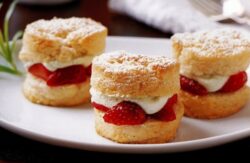

- 1 2/3 cup (208gr)all purpose flour
- 3 1/2 tablespoons sugar - I use more - 50grams
- 1 1/2 tablespoons baking powder
- 6 tablespoons (85gr) cold unsalted butter, cut into 1/2 inch cubes
- 2/3 cup(158ml) + 1 tablespoon heavy cream
- 1 tablespoon (or more) turbinado or raw sugar
- Either in a food processor bowl, or an electric mixer bowl outfitted with the paddle attachment, combine the flour, sugar, baking powder and salt.
- Pulse briefly or mix to combine.
- Ad the butter and pulse or mix until the flour resembles coarse meal.
- Add the 2/3 cup of cream and pulse or mix together JUST until the dough barely comes toget her - you may have to scrape the sides of the bowl.
- Turn the dough out onto a lightly floured surface and gently pat it into a 6 inch square, 1 inch thick, incorporating any stray crumbs.
- Wrap in cling film and refrigerate for one hour.
- Preheat oven to 350F(175C) and cut the dough into 6 biscuits (she gets 9 small ones).
- Brush the tops of the biscuits with the remaining tablespoon of cream and sprinkle the tops with the sugar.
- Place the biscuits on a parchment lined baking sheet- she places them 2 inches apart, I place mine close together in a round cake pan.
- Bake until the biscuits are golden brown, 20-25 minutes, then transfer to a wire rack to cool.

Kitchen Detail shares under the radar recipes, explores the art of cooking, the stories behind food, and the tools that bring it all together, while uncovering the social, political, and environmental truths that shape our culinary world.
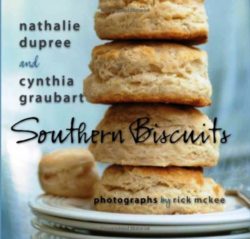
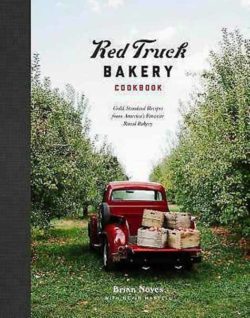
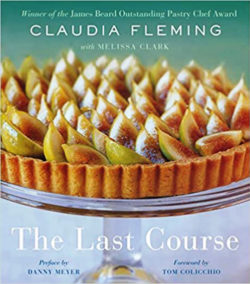




Do you use a ‘southern’ all purpose flour, like White Lily or Southern Biscuit? The protein content is much lower than King Arthur AP, and lower than even beached Gold Medal.
Hello Deb,
I used to use White Lily but I still couldn’t make a biscuit like my mother in law, and she used all purpose flour. So I gave up. I now use a good quality organic flour. I have read that since White Lily was bought by another corporate, the flour has changed, but I have not used it. I have also used a 00 Italian white flour and that has worked well too. – same one I use for making egg pasta.
Nancy
Biscuits are a struggle for me. They crumble, they don’t rise. All kinds of reasons. But lard isn’t an option either (no pork) so I’ve always used Crisco. I tried some organic shortening from Mom’s but couldn’t get some cookies to come together the right way that I’ve always used Crisco for so that wasn’t a good option either. I think my technique is just off and recipes just never seem to help with that. I need someone standing next to me smacking my hand.
Hello Jennifer
Never tamper with success! If Crisco works, I would stick with it. I clearly was very heavy handed and i also patted or rolled out the dough too thinly. I must admit, that I had better luck with the Bakewell Cream baking powder, but that may not have been only one of the issues.
Nancy